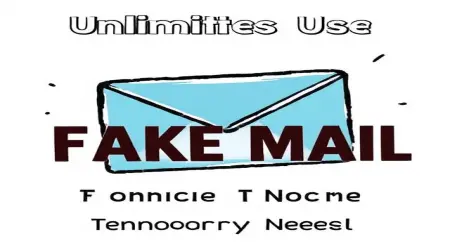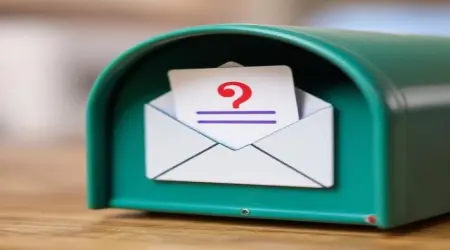

What Is Fake Mail and Why Do People Use It?
Fake mail is a temporary email address that serves as a disposable alternative to a user’s real inbox. These email addresses are generated instantly by online services and can be used to receive messages, such as verification codes, links, or one-time communications. They are often anonymous, short-lived, and require no sign-up or personal information. This makes fake mail highly useful for online activities that demand an email address but don’t justify exposing a permanent inbox. People around the world use fake mail every day to bypass unnecessary email signups, avoid spam, protect their privacy, and interact with digital platforms without leaving a traceable footprint. The growing importance of fake mail in today’s internet culture reflects a broader concern with digital privacy, control, and convenience.
The internet is full of websites and services that require an email address to access their features. Whether it’s downloading an ebook, watching a free video, trying out a tool, or simply reading a gated blog post, users are frequently forced to provide their contact information. In most cases, these platforms collect and store that email address, which may then be used for advertising, data sharing, or analytics. Over time, the user receives countless newsletters, promotional messages, and follow-ups they never asked for. Fake mail solves this problem by offering a temporary inbox that users can abandon after receiving the message they were waiting for. It works just like a regular email, except it expires after a short period or is discarded by the user after use.
The rise of spam and unsolicited marketing has made users more cautious about where and how they share their email addresses. Every time a real email is entered on a website, there is a chance that it will be harvested by third-party bots, added to marketing databases, or shared with advertisers. Fake mail prevents this by acting as a shield. It absorbs the spam, stops the follow-up emails, and ensures that the user’s actual inbox remains untouched. People no longer want to receive dozens of emails from newsletters they never signed up for or from sites they visited only once. Using a temporary email lets them get what they need and move on without worrying about unwanted messages.
Another key reason people use fake mail is to maintain anonymity. Many online activities, from joining forums to commenting on blogs or accessing beta tools, require email verification. These platforms don’t need to know who the user is. They only need confirmation that the person has received a verification code or link. Fake mail provides exactly that, with no strings attached. Users don’t have to worry about being tracked or profiled based on their email usage. The address exists only for as long as needed, then disappears along with any information it might contain. This level of anonymity is especially useful for users who value their privacy and don’t want to leave a digital trail.
Fake mail is also incredibly popular among developers, testers, and IT professionals. When building websites, apps, or platforms that involve email signups or notifications, it’s essential to test these functions in a safe environment. Using a real email account for testing purposes can create clutter, lead to confusion, or even cause security issues. Fake mail allows for instant generation of test accounts that can receive emails without impacting a production inbox. Developers can quickly simulate user experiences, confirm that verification messages are delivered correctly, and debug workflows without ever leaving the testing environment. The use of disposable mail in software development has become a best practice for many agile teams and startups.
Online shoppers and deal hunters also turn to fake mail to make the most of limited-time offers, first-time buyer coupons, and free trials. Many e-commerce sites offer incentives for signing up with an email address. Users who don’t want to commit their personal information for a one-time discount often turn to disposable mail. They get the code, make the purchase, and avoid receiving promotional messages afterward. Similarly, for services offering limited access or trial periods based on email address, fake mail makes it possible to sign up multiple times without restrictions. This provides more value to the user and helps them explore a service fully before deciding whether it’s worth paying for or using regularly.
There’s also a significant security benefit to using fake mail. Phishing attacks and email scams continue to be a widespread threat. The more websites and platforms a user shares their email with, the higher the chance that one of them will be compromised. If that happens, hackers might use that email for further attacks or to steal additional data. By using a fake mail address on unknown or untrusted platforms, users limit their exposure. Even if the fake mail gets compromised, it doesn’t connect to their identity, financial data, or sensitive accounts. It becomes an isolated incident with no impact, acting like a buffer zone between the user and potential cyber threats.
Social media users often turn to fake mail to create alternate accounts. Whether it's to maintain separate professional and personal profiles or to monitor competitors, having more than one account can be useful. Platforms like Facebook, Instagram, or Twitter require a unique email for each account. Rather than managing multiple real addresses, users can quickly generate fake mail addresses to create these profiles. Once the account is made, they can change the email to a primary one or leave it as is, depending on their purpose. This flexibility makes fake mail a valuable tool for influencers, digital marketers, and even casual users looking to explore without committing.
Fake mail services are also used in educational and academic environments. Students who want to sign up for tools, download templates, or access research material often encounter email gates. Instead of providing their university email or personal address, which may be bombarded with follow-ups, they can use disposable mail. It allows them to complete assignments, gather resources, and use digital learning tools without compromising their inbox. Teachers and IT administrators may also recommend fake mail when students need to test online services or register for temporary software access during classroom activities.
Freelancers, consultants, and remote workers appreciate fake mail for separating client communications or testing how a platform works. Sometimes they need to view how an onboarding email appears to a client or see how automated messages are delivered. Instead of using their personal account, a fake mail address allows them to experience the workflow from the client’s perspective. It creates a cleaner work environment and avoids confusion caused by mixing test messages with real correspondence. Fake mail enables smarter workflow management, especially in fast-paced digital jobs where time and focus are key.
In regions where internet freedom is limited or where surveillance is common, fake mail becomes a tool for safe access. Journalists, activists, and individuals seeking information online can use disposable mail to register anonymously, download restricted material, or access blocked websites. These emails provide a degree of protection from monitoring or censorship and help preserve the user’s freedom of information. Since they leave no permanent record, fake mail addresses offer peace of mind and a safe passage through digital environments that may otherwise be hostile or controlled.
Gaming communities also rely heavily on fake mail to create multiple accounts, access giveaways, or register for early access and beta testing. Games that restrict players to one account per email or offer in-game rewards for new signups can be navigated easily with fake mail. Players generate new emails, sign up again, and claim rewards without needing multiple real addresses. It’s a tactic used to maximize benefits and explore different aspects of games without being tied to one identity. For professional gamers or streamers, this flexibility is a game-changer.
Privacy-focused individuals also use fake mail to stay in control of their digital identity. Instead of tying everything to one or two main email accounts, they distribute activities across temporary addresses. This reduces the risk of being profiled or tracked by advertising companies and data brokers. Every disposable email becomes a layer of separation, making it harder for third parties to connect behaviors and preferences to a single person. In an age where personal data is a commodity, fake mail offers resistance and self-defense.
Many users simply want to avoid the nuisance of spam and junk mail. Signing up for a newsletter, downloading a freebie, or entering a contest often results in months of annoying emails. Fake mail stops the problem before it begins. Users get what they need and leave nothing behind. There's no unsubscribe link to click, no inbox to clean, and no lingering traces of activity. It’s a hassle-free way to engage with the internet on your terms.
The accessibility of fake mail is another reason it’s so widely used. With no registration required, anyone can use it instantly. Most services are free, mobile-friendly, and offer features like custom usernames, domain selection, or even attachments. This simplicity means that even non-technical users can benefit from the power of disposable email. It democratizes access to digital privacy and makes smart browsing available to everyone.
Even email marketers and outreach professionals use fake mail to test their campaigns. Before launching a newsletter to thousands of subscribers, they send test emails to fake mail inboxes to verify formatting, links, and deliverability. This ensures a smooth experience for recipients and avoids embarrassing mistakes. By using fake mail as a testing tool, they increase quality and professionalism without risking their real sender reputation.
For people participating in online surveys, polls, or forums, fake mail offers a quick entry point. Many of these platforms require email verification but don’t offer much long-term value. Users can participate, express opinions, or gain access to rewards without providing their true email. It keeps the process quick, secure, and anonymous.
Parents introducing their children to online games or educational tools often use fake mail to protect their kids’ data. Children may not understand the risks of giving out personal information online. By using disposable email addresses during registration, parents can safeguard their children’s privacy while allowing them to explore and learn online.
Online entrepreneurs also use fake mail when registering domains, testing affiliate platforms, or signing up for lead generation tools. Many services require multiple email addresses for account management, testing different strategies, or exploring new niches. Disposable email helps streamline this without overwhelming their personal inbox or disclosing sensitive data.
As the internet becomes more commercialized and data-hungry, the demand for privacy tools continues to grow. Fake mail is a simple yet powerful tool that aligns with the needs of modern users who demand flexibility, security, and anonymity. Whether used once or dozens of times a day, it adds value by preventing spam, hiding identities, and simplifying online tasks. Its purpose isn’t to deceive, but to protect. It empowers users to decide when and where they share their real information, and when they’d rather stay invisible.


